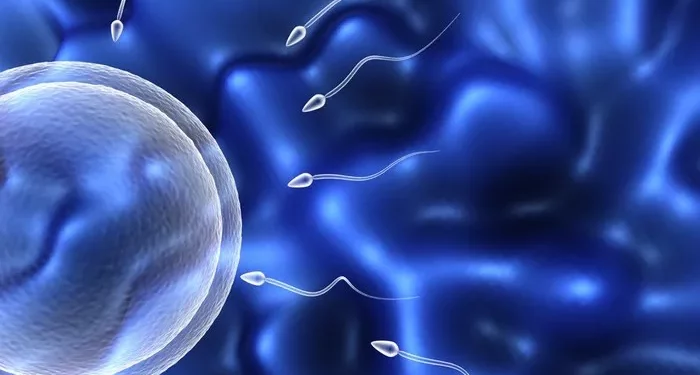A semen analysis, also known as a sperm count test, is a crucial diagnostic tool in the field of male reproductive health. This test assesses various parameters of a man’s semen and sperm, providing valuable information about fertility potential. While many couples face challenges in conceiving, it is estimated that male factors contribute to approximately 40-50% of infertility cases. Understanding the quality and quantity of sperm is essential for diagnosing male infertility, guiding treatment decisions, and ultimately helping couples achieve their goal of having a child.
What is a Semen Analysis Used For?
Diagnose Male Infertility
The primary purpose of a semen analysis is to diagnose male infertility. Infertility is defined as the inability to conceive after one year of unprotected intercourse. For couples experiencing difficulty in conceiving, a semen analysis can reveal if sperm quality or quantity is a contributing factor. Factors such as low sperm count, poor motility, and abnormal morphology can significantly impact the ability of sperm to fertilize an egg, thus affecting conception.
Confirm Vasectomy Success
Another common use of a semen analysis is to confirm the success of a vasectomy. A vasectomy is a surgical procedure used as a form of permanent contraception, where the vas deferens (the tubes that carry sperm) are cut or sealed. Post-vasectomy, a semen analysis is performed to ensure that no sperm are present in the ejaculate, confirming the effectiveness of the procedure.
The Semen Analysis Procedure
Sample Collection
The process of semen analysis begins with the collection of a semen sample. This can be done either at a clinic or at home, depending on the preference and convenience of the individual. At a clinic, a private room is usually provided to collect the sample through masturbation. For home collection, a special semen collection kit is provided, and the sample must be delivered to the laboratory within a specified timeframe, typically within one hour, to ensure the accuracy of the results.
Importance of Abstinence Time
To obtain an optimal sample, it is recommended that the individual abstains from ejaculation for a period of 2-5 days before the test. This abstinence period helps to ensure that the semen sample reflects the average sperm count and quality. Longer or shorter periods of abstinence can affect the results, with too frequent ejaculation potentially leading to a lower sperm count and prolonged abstinence resulting in older, less motile sperm.
Avoiding Lubricants
It is also important to avoid the use of lubricants during sample collection, as many lubricants can negatively impact sperm motility and viability. If needed, a special sperm-friendly lubricant can be used, but it is best to consult with the healthcare provider or the laboratory conducting the analysis.
What Does the Test Analyze?
Semen Volume and Appearance
One of the first parameters assessed in a semen analysis is the volume of the semen sample. Normal semen volume ranges from 1.5 to 5 milliliters per ejaculate. Low semen volume may indicate issues with the seminal vesicles or prostate, while excessively high volume could dilute the concentration of sperm. The appearance of the semen, including its color and consistency, is also evaluated. Normal semen is typically whitish-gray and coagulates initially, then liquefies within 20-30 minutes. Any deviations from this, such as yellowish or reddish tint, could indicate infection or the presence of blood.
Sperm Count
Sperm count, or sperm concentration, is a critical factor in assessing male fertility. It measures the number of sperm present in one milliliter of semen. A normal sperm count ranges from 15 million to over 200 million sperm per milliliter. A count below 15 million per milliliter is considered low (oligospermia), which can significantly reduce the chances of successful fertilization. Azoospermia, the complete absence of sperm in the ejaculate, is a more severe condition requiring further investigation.
See also: SpermCheck Vasectomy Test: A Guide for Men After Vasectomy
Motility (Movement)
Sperm motility refers to the ability of sperm to move efficiently. This is crucial for the sperm to navigate through the female reproductive tract and reach the egg for fertilization. Sperm motility is usually categorized into four grades: rapid progressive, slow progressive, non-progressive, and immotile. A normal semen sample should have at least 40% of sperm exhibiting progressive motility. Poor sperm motility, or asthenozoospermia, can be a significant barrier to conception, as immotile or poorly motile sperm are less likely to reach and fertilize the egg.
Morphology (Shape)
The morphology of sperm refers to their shape and structure. Normal sperm have an oval head and a long tail, which is essential for effective movement. Abnormalities in sperm shape, such as a large or misshapen head or a crooked or double tail, can impair the sperm’s ability to fertilize an egg. In a semen analysis, the percentage of normally shaped sperm is evaluated, with a normal range being at least 4% normal forms. High levels of abnormal sperm morphology, or teratozoospermia, can be an indicator of genetic defects, exposure to toxins, or other underlying health issues.
Other Factors Analyzed
In addition to the primary parameters, a semen analysis may also assess other factors such as pH level, presence of white blood cells, and the liquefaction time of the semen. The pH level of normal semen ranges from 7.2 to 8.0. Deviations from this range can indicate infections or other health issues. The presence of white blood cells, or pyospermia, can suggest an infection or inflammation in the reproductive tract. Liquefaction time, or the time it takes for semen to transition from a gel-like state to a liquid, should occur within 20-30 minutes; delays may indicate problems with the seminal vesicles or prostate.
Semen Analysis Results
Normal Results
Normal results from a semen analysis would typically include a semen volume of 1.5-5 milliliters, a sperm count of 15-200 million per milliliter, at least 40% motile sperm, and at least 4% normal morphology. Additionally, the semen should have a normal pH range of 7.2-8.0 and no significant presence of white blood cells. These parameters suggest that the male’s sperm are within the normal range for fertility.
Abnormal Results
Abnormal results in a semen analysis can indicate various potential issues. A low sperm count (oligospermia) or absence of sperm (azoospermia) can point to problems with sperm production or blockages in the reproductive tract. Poor sperm motility (asthenozoospermia) can be caused by a variety of factors, including genetic defects, lifestyle factors, or infections. Abnormal sperm morphology (teratozoospermia) may indicate exposure to toxins, genetic issues, or other health problems. Abnormal pH levels, high white blood cell count, or delayed liquefaction time can also suggest infections or issues with the seminal vesicles or prostate. Abnormal results often require further consultation with a healthcare provider to determine the underlying cause and appropriate treatment.
Conclusion
A semen analysis is a vital tool in evaluating male fertility and diagnosing potential issues that may be impacting a couple’s ability to conceive. By analyzing semen volume, sperm count, motility, morphology, and other factors, this test provides a comprehensive assessment of sperm health. Understanding these parameters can help guide treatment decisions and increase the chances of successful conception. For any concerns or questions about semen analysis results, it is important to consult with a healthcare provider who can provide personalized advice and recommendations.
Related Topics:
Men’s Fertility Blood Test: A Full Guide to the Path to Fatherhood



























